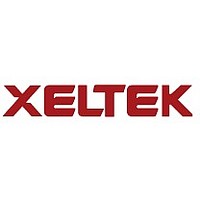SUPERPRO9000U(ROHS) Xeltek, SUPERPRO9000U(ROHS) Datasheet - Page 10

SUPERPRO9000U(ROHS)
Manufacturer Part Number
SUPERPRO9000U(ROHS)
Description
PROGRAMMER GANG QUAD SKT W/USB
Manufacturer
Xeltek
Series
SuperPro 9000Ur
Type
Gang-Universal Programmerr
Specifications of SUPERPRO9000U(ROHS)
Contents
4 sets 48-DIP Programming Sockets, Programmer, AC Adapter, USB Cable, Users Guide and Power Supply
For Use With/related Products
E/EPROM, FLASH, PLD, Micros and more listed on Device Sheet, 38,000+ Devices Supported.
For Use With
415-1029 - SOCKET ADAPTER FOR SDIP42415-1028 - SOCKET ADAPTER FOR TQFP32415-1027 - SOCKET ADAPTER FOR TSOP56415-1025 - SOCKET ADAPTER FOR SOIC20415-1024 - SOCKET ADAPTER FOR TSOP40415-1023 - SOCKET ADAPTER FOR SOP44415-1022 - SOCKET ADAPTER FOR TSOP56415-1019 - SOCKET ADAPTER FOR SOIC16/SOIC8415-1018 - SOCKET ADAPTER FOR SOIC28415-1015 - SOCKET ADAPTER FOR PLCC28415-1014 - SOCKET ADAPTER FOR PLCC20415-1013 - SOCKET ADAPTER FOR PLCC32415-1017 - SOCKET ADAPTER FOR PLCC44
Lead Free Status / RoHS Status
Lead free / RoHS Compliant
Other names
415-1009
SUPERPRO 9000U
SUPERPRO 9000U(ROHS)
SUPERPRO 9000U
SUPERPRO 9000U(ROHS)
Xeltek, Inc.
directly go to your part or you can search for your part by first selecting the Device Type (E/EPROM, BPROM,
SRAM, PLD, or MCU) followed by manufacturer and device part number from the screen. Click OK button or
double-click the device to confirm your selection.
3.2.2 Load data into Buffer
The programmer accesses data in the buffer. User file should be loaded into the buffer before programming. Another
buffer data source is the master chip.
Loading a data file
You may load a data file into the memory buffer by either clicking on the File menu and selecting Load File to
browse for your data file or by clicking on the Load button. After selecting your data file, a File Type box will appear
where you will need to select the appropriate file type of your data file. At this point, the selected data will be
loaded into the memory buffer. Please go to the Buffer Edit screen and check if the data is loaded properly.
Note: Some Hex or S record files contain non -zero file start address. In this case, the start address should be entered
in the File address box.
Loading data from a master chip:
Loading data from a master chip begins by reading data from a chip. Insert the master chip/adapter with chip
inserted on the programmer and select the chip in the software. Click on the Read function located in the device
function area. The result of the Read function, will copy the data from the master chip into the memory buffer. At
this point you may go to the memory buffer edit screen and check if the data is loaded correctly. The data may be
saved to a disk for later use.
Note1: Only the chip in the master module (#1) is readable.
Note2: Some devices have no read function or are encrypted. Data cannot be read from under this condition
3.2.3 Options
1) Operation Option including:
·Insertion Test, checks the pin contact before programming.
·ID Check, check device’s ID before programming.
·Beeper On, beeper sound off when the operation succeed or fail.
·Verify Mode, gives the user the option to choose specific VCC voltage values during verification in order to check
if the chip is correctly being programmed. Use appropriate VCC values according to your chip.
2) Edit Auto, gives the user the option to create batch commands to automatically perform multiple device functions.
Click on the Edit Auto button located on the Operation Toolbar or under Options pull down menu and add/delete
functions you want listed under the Auto list. Clicking the Auto function in the device function area of the software
will run these batch commands. Normally, the following programming steps are included under Auto list,
·Erase
·Blank_check
·Program
·Verify
·Security or Protect
3) Dev. Config, gives the user the capability to enable/disable available options specific for a chip. These options
must be properly set before programming to ensure the chip can be used on the targeted system
4) Dev. Information, some devices have special requests or conventions of programming so user should adjust
operation steps or buffer data after carefully read ing the information in the Dev. Information box
5) Production Mode , puts the software in a mode where programming a large number of chips is made easy. With
the help of insertion test and batch Auto commands, users simply insert and plucking out the chip under the
Production Mode. You must first edit the Auto list to suit your needs and then press the Auto function to start
operating in production mode.
3.2.4 Program the Data in Memory Buffer into a Chip
If the chip package is not DIP encapsulation, user may need to buy the adapter according to the info in the Adapter






















